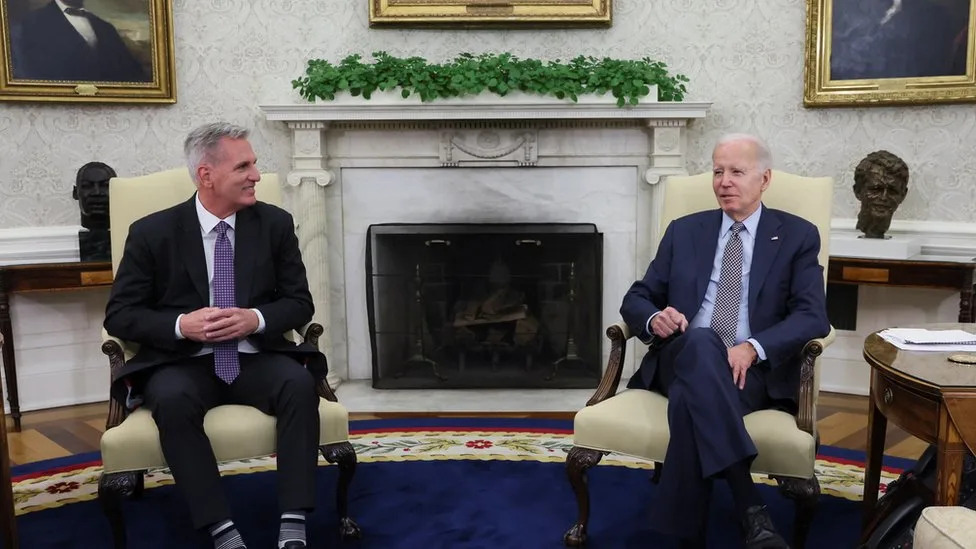Debt Ceiling Standoff: Have you ever been at a stalemate in a game of chess? You know, where neither player can make a move without putting their king in check? Well, that’s the perfect metaphor for what’s happening right now between President Baiden and House Minority Leader McCarthy over the US debt ceiling. This blog post unravels the ongoing saga, discusses the potential implications for the market, and looks at what’s coming next.
Table of Contents
The Stakes of the Game
Think of the debt ceiling as America’s credit card limit. It’s the total amount of money that the United States government is allowed to borrow to pay for things it’s already bought. Simple, right? But what happens when you reach your limit and you still have bills to pay? That’s the cliff-edge the US is teetering on, and it’s causing some serious turbulence in our economy.
The Main Characters
In one corner, we have President Baiden, who believes we need to increase the debt ceiling to prevent economic catastrophe. And in the other corner, we have McCarthy, who’s refusing to budge until there’s a comprehensive plan for reducing government spending. Their latest meeting ended without a deal, leaving us all wondering: “What’s next?”
Implications for the Market
Well, the uncertainty is starting to take its toll on the market. Think of it like this: Imagine you’re an investor, unsure whether the US government will pay its debts. You’d probably be a little nervous, right? This nervousness is reflected in rising yields and shaky markets, which could impact everyone’s wallets if a deal isn’t reached soon.
The Road Ahead Debt Ceiling Standoff
So, where do we go from here? That’s the million-dollar question. Or, more accurately, the 28 trillion-dollar question. But seriously, the pressure is on for Baiden and McCarthy to find a resolution. The risk? A potential economic downturn that could affect us all.
US Debt Ceiling Crisis: What You Need to Know
Biden, McCarthy End Meeting Without a Debt-Ceiling Deal. Yellen Warns the X-Date Is Fast Approaching
